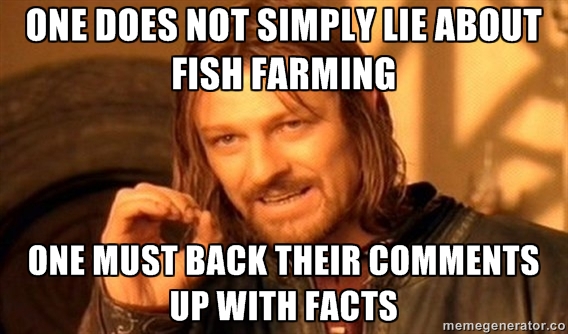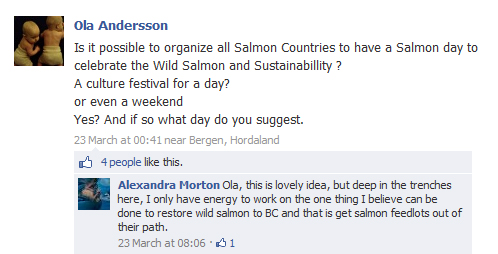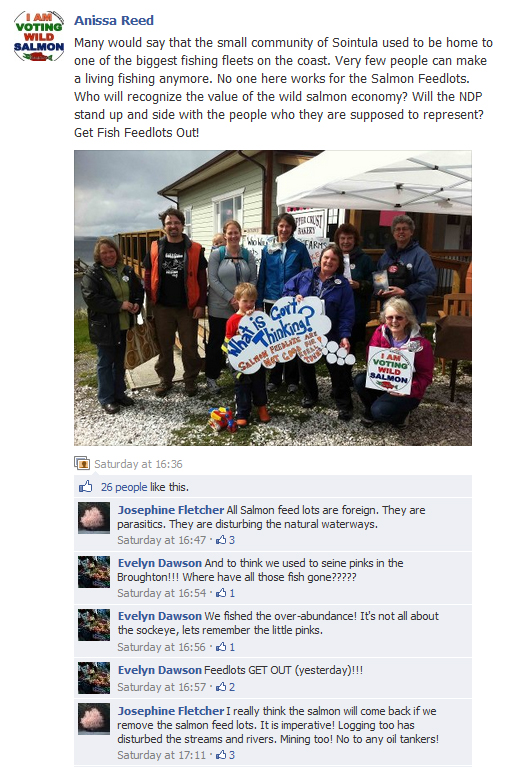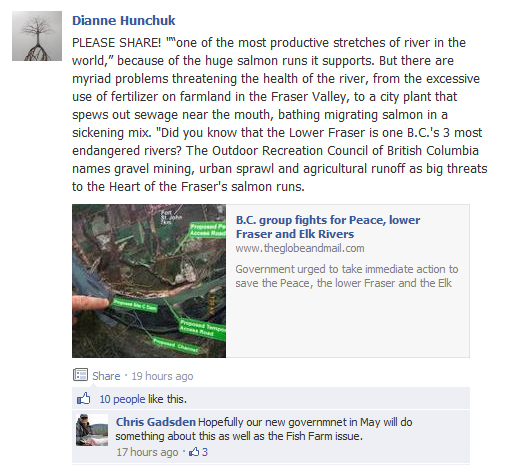This is part three in a three part series on Alaskan salmon ranching. Click link to view part 1: Alaska’s Little White Lie and part 2: Hatchery Fish Are Not Wild.
Fishermen don’t catch fish out of the goodness of their hearts. They do not gently whisper to each fish, “you’re sustainable,” as they yard them into their holds. They endure long unpleasant days at sea and hard work for the paycheque that comes at the docks. That has not changed since people started catching fish, and the history of fishing in the Pacific Ocean is no different.
And not surprisingly, the roots of the wild versus farmed salmon dichotomy are firmly and deeply financial. To understand it, we need to look at the history.
Alaska: Turning point 1972

Commercial fishing in Alaska began in earnest at the end of the 19th century. Catches grew rapidly with the expansion of cannery capacity through 1920. This intensity led to overfishing. Low stocks led President Eisenhower to declare Alaska a federal disaster area in 1953. This state of emergency, labeled a severe hardship to salmon industry, was declared for 3 consecutive years.

View of men unloading salmon from fishing boat at cannery in Bristol Bay, Alaska. 1950’s
Alaska achieved statehood in 1959. Written into the state constitution is a policy of sustainable yield which applies to the use of all replenishable resources. The new constitution, as well as a new federal interest in financially supporting commercial fishing in the north, led to a recovery in the stocks and a decade of productive harvests.
But in the 60’s, B.C. and Alaska fishermen were competing with fishing boats from the USSR, Japan and even Poland. The development of new fishing technologies and the foreign fishing fleets competing for fish in the North Pacific led to overfishing and a record low catch in 1972 in Alaska and low catches elsewhere in the world.

Since the 1970s, the situation has improved. Stricter permits, the creation of the 200 mile economic exclusion zone and the creation of private non profit hatcheries (salmon ranching) has led to the extremely high salmon catches experienced today in Alaska.
But high salmon catches do not mean people are acting to protect salmon stocks for the environment’s sake. Fisheries, like all industries, are concerned with profits. The state of emergency in the 50’s was not a call to protect the environment; protecting the jobs of fishermen was more important. The same is true for the decline in the 70’s. In Alaska, the only desire to replenish the salmon stocks using large scale hatcheries was so that there were more available to catch, can and sell.
“It [The hatchery program] was intended to supplement, not supplant, wild stock production.”
The problems with hatcheries, such as loss of genetic diversity, were a concern to some in the 70’s but the priority was jobs, not the environment.
“Governor, I’m sure the proper ‘genetics’ of salmon are important. However, I’ll wager that if our fishermen have to make a choice between salmon with the wrong ‘genetics’ or no salmon at all they’ll not worry that much about the salmon’s parents or where he came from,” state Rep. Oral Freeman of Ketchikan wrote to Gov. Jay Hammond in 1975.”
It was around this time that the largest oil field in North America was found in northern Alaska and the Trans-Alaska Pipeline was built.This meant that Alaska had more government money to fund projects such as hatcheries which were government-run at first and only later were run as public non profit enterprises.
Commercial fishermen in areas with large hatchery programs have benefited greatly, however, fishermen from other areas of Alaska may have been harmed due to the depressed prices from the larger volumes of fish that are available.
“Many hatcheries are not viable without continuing state subsidies.The Alaska salmon hatchery programme is neither obviously an economic success nor obviously an economic failure.“
B.C.: Aquaculture becomes attractive
From California to B.C. salmon harvests were nowhere near as high as in Alaska and hatcheries were having a limited effect. In the 1970s, inspired by the success in other parts of the world, people started looking at aquaculture to provide coastal communities with other options to replace the slowly, but surely, declining commercial fisheries.Salmonids (Rainbow trout, Salmo gairdneri, and Atlantic salmon, Salmo salar) were being cultured in seawater in Scandinavia, the British Isles and Japan as early as 1969.
“Losses of salmon stocks from damming, logging, pollution, etc., coupled with the rising demand for salmon as food, have led to extensive investment in artificial propagation to augment the natural runs. During the last 100 years, salmon hatcheries on the Pacific coast of the United States have evolved into expensive systems under constant economic scrutiny. In many areas rising capital costs and the limited fresh water will prevent much new construction or expansion of salmon hatcheries. Therefore, to expand the present levels of production we must seek new, economical methods of salmon culture.“
Aquaculture on the west coast started in Washington but quickly expanded into B.C.
Alaska turns to marketing in 1981 after health scare

ASMI – Alaska Seafood Marketing Institute
“The desire to create a wholesome image and worldwide markets for Alaska’s seafood products spawned the creation of ASMI in 1981.“
This wholesome image was needed after problems arose in 1980 and 1981 when there were reported cases of botulism infection and one death due to botulism in Belgium. The source of the spores was linked to Alaskan canned salmon. At this time canning salmon was the best way to ship the product worldwide. Flattened cans were shipped to the cannery and were reformed in a machine before the salmon was placed inside and sealed. It is believed that a defect may have been caused in the plant by the can reforming equipment. This may have caused tears in the edges of the can which allowed botulism spores to enter the can. There was a large recall of the product and there were many economic repercussions from this incident.
ASMI started its career when it launched a canned salmon recovery program. Since that time ASMI has evolved into a very powerful marketing group.
“The Alaska Seafood Marketing Institute is a marketing organization with the mission of increasing the economic value of the Alaska seafood resource… ASMI is playing a key role in the repositioning of Alaska’s seafood industry as a competitive market-driven food production industry. Its work to boost the value of Alaska’s seafood product portfolio is accomplished through partnerships with retail grocers, foodservice distributors, restaurant chains, foodservice operators, universities, culinary schools, and the media.”
Interestingly, the B.C. Salmon Farmers Association was established shortly afterwards in 1984.
“The BC Salmon Farmers Association is a forum for communication and cooperation within the salmon farming sector, and the focal point for liaison between the industry and government. We also provide information to the public and stakeholders about salmon farming, and coordinate industry-wide activities such as a Code of Practice, research, and community events. Our members include both farmed salmon producers, and many of the companies who provide services and supplies to them.”
Here is a case-in-point in the farmed vs wild dichotomy. The BCSFA is painted with a negative brush because it represents “industry” yet the ASMI is applauded by some because it supposedly represents wild seafood interests. But the truth is, both groups represent industries and are equally concerned with the economics surrounding those industries.
90’s – Farmed Salmon makes a splash
Wild salmon dominated the market in the 80’s and experienced record high prices in 1988. At this point farmed salmon entered the market in large volumes.
“Commercial salmon farming began in Norway, Washington, Scotland, and British Columbia in the 1970s, but was not a factor in world markets until the mid-1980s, when production reached 50,000 tons. By 1990, farm production had quintupled to more than 250,000 tons. In 1999, world farm salmon production for the first time surpassed salmon fishery production.”

With the increase in production came a decrease in the market value of salmon, and an end to the “good old days” of the 1980s, when Alaskan fishermen received nearly 1.5 billion (in 2011 dollars) for their harvest.

Fresh salmon available year-round forces market changes
Once farmed salmon became a commodity available year-round to customers, people changed the way they purchase, store and eat salmon. In general, people gradually started eating more salmon year-round. This presented a challenge for fishermen, who have only a short window of time to catch, process and sell salmon.
“Generalizations about effects of farmed salmon on “wild” salmon prices risk being overly simplistic and misleading.
The most important factor driving change in world salmon prices has been rapid and sustained growth in world farmed salmon and salmon trout production. This has fundamentally transformed world salmon markets—not only because of the dramatic growth in total supply, but also because of the changes that it has represented in the kinds of salmon products which are available, the timing of production, market quality standards and organization of the industry.”

“Some wild salmon products sell for lower prices than farmed salmon, while others command price premiums.
Many other factors besides farmed salmon have also affected wild salmon prices. These include:
• Increasing concentration in the retail and food service industries
• Increased world pink and chum salmon harvests
• Following the collapse of the Soviet Union, the emergence of Russian wild salmon as a significant competitor to North American wild salmon in the Japanese frozen market and world canned salmon and salmon roe markets
• Declining consumer demand for canned salmon
• The end of the Japanese “bubble” economy of the 1980s and a stubborn economic recession in Japan, historically the most valuable market for North American fresh and frozen wild salmon.”

“They [countries that support aquaculture] recognized significant market growth potential and that wild salmon fisheries could not adequately supply the market with uniform fresh salmon of consistently high quality year round. As a result, farmed salmon created a market in the United States and Europe that wild salmon could not supply.
As a fresh product, farmed salmon received a price premium compared to most frozen wild salmon.”
Turn of the new century
Alaska, where the economy is crucially dependent on fisheries, struggled to adapt to new market realities.
“Salmon price changes have also severely impacted incomes in Alaska… At current levels of production, each 10 cent per pound decline in salmon prices translates to $66 million in lost income for Alaskan fishermen.”

2002 was a particularly bad year for the market price of salmon.
“Back in 2002, the government of Alaska requested that the BC government keep the moratorium on fish farms until the safety of Alaska’s own wild salmon stocks can be guaranteed. The request reads as follows:
FURTHER RESOLVED that the Alaska State Legislature requests the United States Department of State, while negotiating trade agreements with Canada and in the arena of the Pacific Salmon Commission negotiations on the Pacific Salmon Treaty, to consider the numerous negative effects that farmed salmon from British Columbia have on the economy, environment, and fishing industry of Alaska.”
Notice that “economy” comes before “environment” in this official request. Profits are important for any industry, whether that be wild salmon fisheries or salmon aquaculture. In both cases ignoring the environmental impacts would be detrimental to their products and their bottom lines. The truth is that “wild” salmon coming from “pristine” Alaskan waters are part of a billion dollar a year industry that has a vested interest in the market as much as any multinational corporation.
Large profit losses were felt in Alaska due to the decline in the value of salmon. This directly affected coastal communities and those employed in the fishing industry. It is understandable that there are some bad feelings from Alaska toward salmon farming. In 2002 one angry fisherman wrote an email to the ASMI stating his grievances. The email he wrote is not available but the response letter from the ASMI Director Ray Riutta does comment on the question of “Why ASMI Doesn’t Bash Farmed Fish?”:
“As to attacking farm salmon directly, there is more to the issue than
you may realize. And ASMI does a lot more behind the scenes then you
are probably aware of. Why don’t we come out and conduct a frontal
assault on farmed? Well, it is pretty simple. Two reasons: the first
is the most practical and it is that most of the large retail food
chains that sell our salmon also sell farmed salmon. It would be nice if
all they sold was our fish, but that is not the way it is so we have to
deal with the reality of the market place. In order for them to sell
“fresh” salmon fillets year round they have little choice. In many
cases farmed is by far the larger of the two product lines they sell in
terms of volume and profit margin. They do not expect their wholesaler
(that’s us) to be openly attacking other products they sell. If we do
we face loosing the accounts which are worth literally millions of
dollars to our industry and would further depress the already low price
you receive for you fish.
The second is a fundamental marketing rule and that is direct attack ads
by people with similar products generally do not work. They only
confuse the public and end up with both sides loosing market share.
They are seen as self-serving and lack credibility with the general
public. In our case, it is far more credible to leave the attack to
third parties, such as environmental groups and newspaper columnists,
then it is for us to come out and do it ourselves. We can then leverage
that information with a marketing campaign pointing out the positive
aspects of our fish using the bad things about farmed fish as our points
of difference. And that is exactly what we are doing. In addition, we
are helping the people that sell our products or use them in restaurants
understand the differences in wild and farmed fish, which includes
showing them the material that is being generated by the
environmentalists and the media. We also have been working with a number
of environmental groups and media for several years now pointing out the
purity and sustainability of our salmon, which helps them make their
points about the difference in wild verses farmed fish.
We do intend to be aggressive in taking advantage of the current trend
against farmed and in favor of wild salmon at every opportunity, but we
are going to do it in a positive way. By that I mean we will emphasize
the many good things (purity, health benefits, environmentally friendly,
sustainable runs, small family businesses) about our fish and leave it
to others to emphasize the bad things about farmed fish. This is a
position that is strongly endorsed by our board, half of whom are
harvesters, like you, and is constantly reviewed to be sure it is the
best way to conduct our business.”
Most of the “bad things ” about farmed fish have been given wide attention through exaggerations and lies told by environmentalists (often through the media) included levels of PCB’s in farmed salmon, sea lice issues, and most recently disease issues.
And Alaskan seafood companies have repeated these claims verbatim, bashing farmed salmon in their promotional material. Because if environmentalists say it, it must be true, right?
Alaskan seafood companies have also been aggressive in passing this information along to media and other sources, “working behind the scenes” to ensure farmed salmon is associated with “bad things” in people’s minds.
For an example, take a look at the comprehensive study of the money trail and the lies behind the 2004 Hites study about PCBs. Read Research on Contaminants in Farmed Salmon:Science or Marketing? by Vivian Krause. For papers regarding sea lice and other issues related to salmon farming visit the BC Salmon Farmers Association. For an in depth look at the recent salmon disease stories being told by environmentalists visit Salmon Farm Science.
Everybody loses

What marketers bashing farmed salmon need to remember is that when farmed salmon are portrayed negatively in the media the value of all salmon diminishes.
“The salmon industry was hurt by negative publicity following publication in the scientific press earlier this year of studies alleging certain health risks associated with farmed salmon. This general perception affected both our retail and food service salmon sales, even though the majority of salmon sold by High Liner is wild pacific salmon.”
It is important to realize that the competition is not fresh Alaskan vs. fresh farmed salmon. It is frozen and canned versus fresh.
Alaskan salmon is still mostly sold canned or frozen or in some other value-added product such as salmon burgers. Fresh farmed salmon is a great product for restaurants and supermarkets. Niche markets for wild salmon and frozen and value-added markets (where wild salmon can compete on lower cost production) is where Alaska will profit the most in the growing diversified market place.
ASMI has been very successful promoting their frozen product with the “Cook It Frozen!” campaign. Marketing such as this and value added products are how Alaska can continue to profit from wild salmon harvests instead of encouraging a negative campaign through environmental groups.
Like many industries, in order to save money and increase profits, Alaskan salmon is being shipped to China to be processed before being returned to the US and sold as a “made in the USA” product. For a closer look at this topic see our post Alaskan salmon: Product of China.
The Future: SUV of the seafood aisle
An excerpt from “Why farm salmon outcompete fishery salmon” written by academics from Stanford University in California makes an interesting point about the place of wild (fishery) salmon in the market.
“Just as US automakers may never be able to outcompete Japanese manufacturers in the small car sector, fishery salmon will probably never be able to outcompete farm salmon on consistency and availability. However, fishery salmon should be able to thrive as the sport utility vehicle of the seafood aisle: a different, though more expensive and slightly less reliable product.
In the document Alaska Seafood Market Changes and Challenges Gunnar Knapp makes some interesting points about the implications aquaculture have for wild seafood markets and he has some great advice about how the two industries should work together.
Aquaculture has far-reaching implications for wild seafood markets.
• Aquaculture competes with wild production
– Aquaculture expands supply which tends to lower prices
– Aquaculture creates new standards for quality, consistency and availability
• Aquaculture expands demand for fish
– Aquaculture makes fish more widely available
– Aquaculture introduces consumers to fish species
– Aquaculture creates new products
– Aquaculture invests in marketing
– By expanding total demand, aquaculture can expand demand for wild fish as
a “natural” alternative to farmed fish—if wild fish is marketed effectively.
• Aquaculture changes seafood market dynamics
– As wild production becomes a smaller part of total supply, prices don’t
increase as much when wild catches fall
– Aquaculture creates price cycles similar to those for meat and poultry
– Over time, fish prices trend downwards as farming costs fall allowing farmed
production to expand.
– Large scale aquaculture production creates new distribution channels for
seafood
– Aquaculture changes the balance of economic and political power in the
seafood Industry

“Part of the opportunity to increase demand for Alaska salmon is to get more consumers to eat SALMON.
• The more salmon consumers there are, the more wild salmon consumers there will be.
• We should be seriously considering working together with salmon farmers for generic promotion of all salmon.”
Sadly this advice was given in 2003 and to date has not been followed. These two industries are spread between many different countries; it is unlikely that we can expect cooperation in the future.























